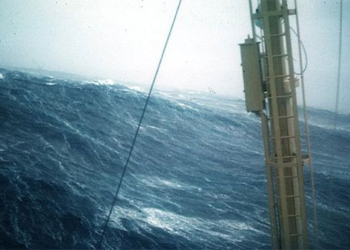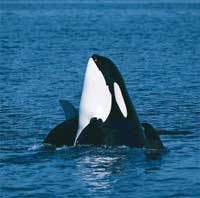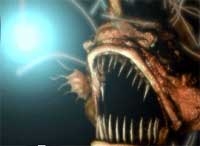Millions of strange blue creatures have washed ashore on rocky beaches from Oregon to California this spring, surprising many tourists.
They are Velella velella, commonly known as “by-the-wind sailor.” This tiny creature has a sail-like structure resembling a hat.
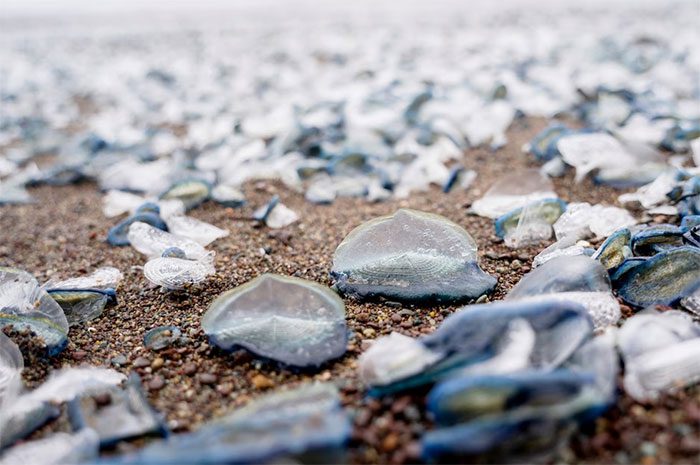
The tiny Velella velella with its unique blue color. (Photo: Getty Images).
Although it appears to be a single entity, Velella velella is actually a collection of organisms belonging to the class Hydrozoa. They spend most of their lives in the ocean, feeding on fish larvae or plankton. Velella velella is harmless to humans.
Several hypotheses explain the vibrant blue color of Velella velella. According to Anya Stajner from the Scripps Institution of Oceanography, the coloration helps them camouflage by blending into the waves. Another theory suggests that this color protects Velella velella from harsh UV rays.
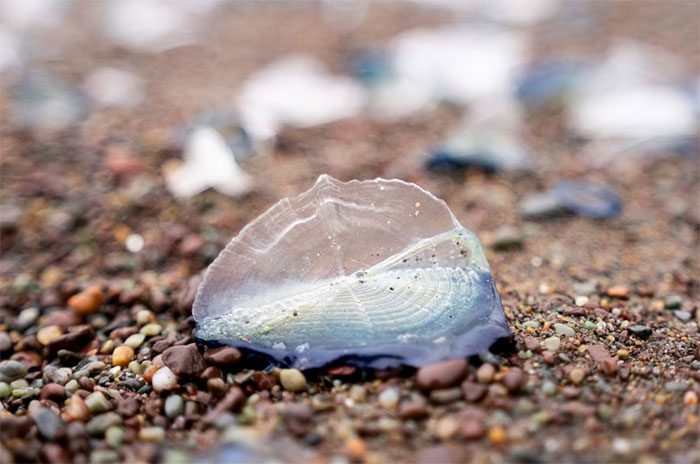
Velella velella, also known as ‘by-the-wind sailor’. (Photo: Getty Images).
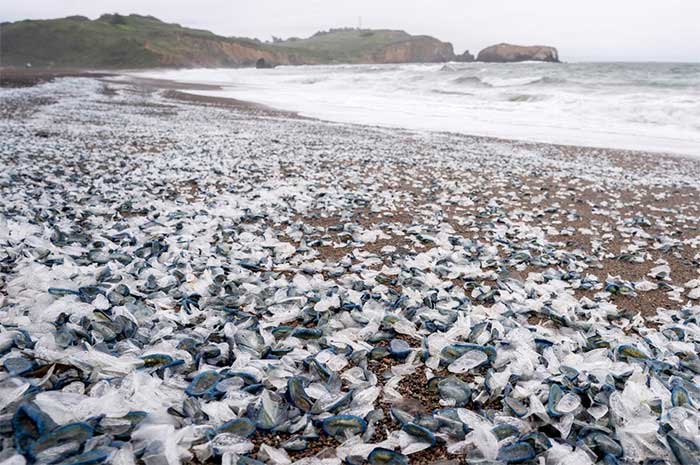
Millions of Velella velella have washed ashore on U.S. beaches this spring. (Photo: Getty Images).
Marine biologist Julia Parrish from the University of Washington adds that Velella velella can live for several months and drift along the Pacific currents. Typically, they travel from the California coast to Central America, then across Hawaii to Japan and back.
Scientists are studying the relationship between Velella velella and ocean temperatures. In 2021, Parrish utilized data collected over 20 years to explore the mass stranding phenomenon of Velella velella and found that this occurrence is more likely when winters are warmer than usual.
As the world’s oceans continue to warm due to climate change, it is likely that more swarms of Velella velella will wash ashore, and they will thrive in the sea. This has led scientists like Parrish to wonder whether these tiny, captivating blue creatures might have more complex impacts on the ocean than previously thought. For instance, Velella velella feed on plankton, fish larvae, and especially fish eggs, which means they could start to affect fish populations.








































